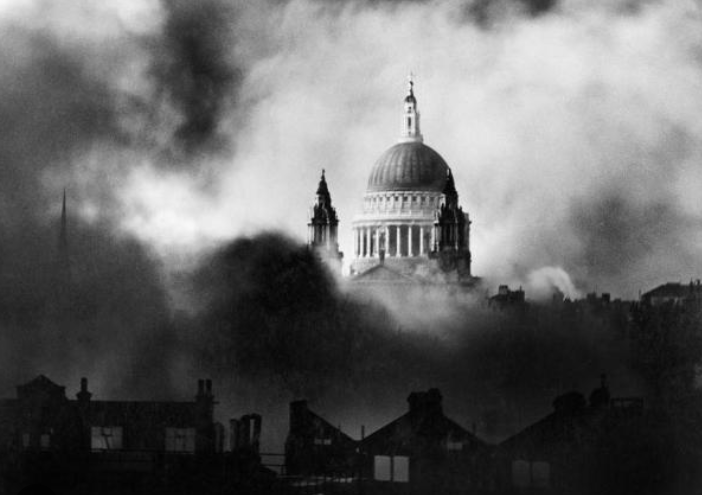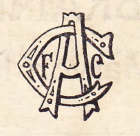Attention: Please take a moment to consider our terms and conditions before posting.
The Blitz
Comments
-
A lot of my early childhood was spent playing wiv me mates in the bomb sites spread around the Lewisham area thanks to the Blitz3
-
You could message Tom Hovi who occasionally visits this site and is a longterm season ticket holder. ...he's pretty much the definitive expert on The Blitz.ShootersHillGuru said:I don’t pretend to be a student of this period but I thought I was reasonably clued up. I watched a tv programme last night fronted by Robert Rinder and Historian Ruth Goodman. The period in focus was the London blitz, starting in September 1940. Decent enough programme but it mentioned something that I was totally unaware of. Before the German Luftwaffe bombed London for the first time on 7th September 1940, The RAF bomber command had carried out a bombing raid on Berlin on 25th August. Infuriating Hitler that he raged that London would be flattened. Perhaps I should have known about our raid before the German retaliation but I didn’t. I’m sure a good number of you will have far more knowledge than I obviously have. Any comments
And you could visit his website, Blitzwalkers, read his stuff and why not book yourself a Blitz walking tour with him.6 -
Silver lining in every cloud!Lincsaddick said:A lot of my early childhood was spent playing wiv me mates in the bomb sites spread around the Lewisham area thanks to the Blitz3 -
My Mum worked at Vickers Crayford before moving to the Arsenal. She worked packing the detonators, and she was there during the days of September 1940.She told a story of having her sandwiches at lunch watching the dog fights overhead.She never missed a day’s work and sometimes had to walk from Hazel Rd Slade Green to Plumstead.The woman who worked in the factories were never given the due respect and recognition they ALL deserved.She could read a micrometer in her 80s7
-
My Dad wrote home about Brixham getting bombed and how exciting it was (he was 10 or 11) my Gran went down and bought them back to London. Back in London, when it kicked off properly they got bombed out, I think Dad began to think the Luftwaffe were following him around.AndyG said:My Dad and his brother were evacuated from Bow. They were 5 & 8 years old after a week they ran away and made their way back to Bow lol1 -
Thought you might be interested in this:usetobunkin said:My Mum worked at Vickers Crayford before moving to the Arsenal. She worked packing the detonators, and she was there during the days of September 1940.She told a story of having her sandwiches at lunch watching the dog fights overhead.She never missed a day’s work and sometimes had to walk from Hazel Rd Slade Green to Plumstead.The woman who worked in the factories were never given the due respect and recognition they ALL deserved.She could read a micrometer in her 80s
https://www.crayfordhistory.org.uk/category/projects/bartram-the-blitz-and-beyond
2 -
The house I grew up in was In Kinveachy Gardens SE7 and from looking at a bomb map it was noted that this dwelling was seriousply damaged but not destroyed by enemy bombing. Halfway down Kinveachy Gardens and opposite number 53 where I lived there is a small block of flats where the bomb completely destroyed I would say about eight houses.1
-
My Grandparents and their children, including my Dad, sheltered under their quarter-sized snooker table. We still have that table. I cannot imagine what is was like.0
-
I’m Interested in history but the obsession with WWII and WWI is, I think diminishing this country. Our focus on the relatively recent past really fucks up dealing with the present and future. Lauding sportspeople as those you’d want to be alongside in the trenches for instance.2
-
My Mum and Uncle were evacuated from Hackney to Liverpool, just in time for the air raids to start up there. My nan had them sent back saying that if they were going to be hit by a bomb it would be better for the whole family to go together. I think they were only up there for a couple of weeks. My Uncle's main recollection was that the people he was staying with promised to take him to football (presumably a war time friendly). He was very excited thinking he was going to watch Liverpool, but they took him to see Everton instead.AndyG said:My Dad and his brother were evacuated from Bow. They were 5 & 8 years old after a week they ran away and made their way back to Bow lol0 -
Sponsored links:
-
This sounds like only half a story. What happened nextse9addick said:
This is one of, maybe the, most iconic pictures of London. A year or two ago I was out for drinks with a colleague who had just transferred here from Canada. Our work is just round the corner from St Paul’s so I drunkenly showed her this picture and then blathered on about how amazing the photo was, how important St Paul’s is to Londoners and how this picture showed the spirit of resistance of the WW2 generation.Raith_C_Chattonell said:My dear departed mother-in-law was a stones throw away in Islington when this iconic picture was taken. It was her 21st birthday.
From the program last night I learnt that the Germans dropped 100,000 incendiary bombs during the seven hour raid - roughly 300 a minute. The story goes that she still managed a few drinks somehow. 2
2 -
Like many aspects of the war, many myths have grown around the Blitz, including the one that London was bombed "in error" by the Luftwaffe on the 24 August 1940, a myth perpetuated in many publications and in the Battle of Britain movie of 1969. When one looks at the incident logs for that night, there were simply too many bombs dropped over too wide an area for this to have been the work of one lone aircraft dumping his bombs mistakenly over London.ShootersHillGuru said:I don’t pretend to be a student of this period but I thought I was reasonably clued up. I watched a tv programme last night fronted by Robert Rinder and Historian Ruth Goodman. The period in focus was the London blitz, starting in September 1940. Decent enough programme but it mentioned something that I was totally unaware of. Before the German Luftwaffe bombed London for the first time on 7th September 1940, The RAF bomber command had carried out a bombing raid on Berlin on 25th August. Infuriating Hitler that he raged that London would be flattened. Perhaps I should have known about our raid before the German retaliation but I didn’t. I’m sure a good number of you will have far more knowledge than I obviously have. Any comments
It was the beginning of a change of strategy by the Luftwaffe to switch from bombing RAF airfields and industrial targets by day, to a policy of bombing Britain's industrial cities.
Bomber Command did indeed bomb Berlin the next night and caused minimal damage and casualties but such was the shock that the RAF had actually bombed targets in Germany, when Goering had basically promised immunity from such attacks, Hitler was moved to publicly change strategy to a policy of what became the night time area bombing of London and other British towns and cities.
What we now call the First Blitz or Night Blitz began on "Black Saturday" 7 September 1940 with a combination of daylight and night time raids on London and continued initially for 57 consecutive nights and then right through to the night of 10/11 May 1941, which was ironically the heaviest raid on London of the entire war, when 540 bombers dropped something in the region of 700 tonnes of High Explosive and a further 86 tonnes of Incendiaries, which killed 1,436 Londoners.
To give a little context to this raid, if one compares it to the second "Gomorrah" raid on Hamburg on 27/28 July 1943, 787 aircraft of Bomber Command dropped 2,326 tons of bombs on the city, including about 350,000 incendiaries. The firestorm caused by this raid killed something in the region of 34,000 people - more than were killed in London during the entire war.
During the entire war, the RAF dropped some 80,000,000 (eighty million) individual incendiary bombs on German targets.
The Luftwaffe was essentially a tactical air force, used to support the army in swift attacks when they had overwhelming air superiority. The twin engined medium bombers that they used could never hope to deliver the bomb loads required to truly devastate a city the size of London. The Battle of Britain severely blunted the Luftwaffe and there were many senior figures amongst the Luftwaffe who felt it never truly recovered from this defeat in 1940.
Bomber Command in contrast was a strategic air force, from late 1942 equipped largely with four engined "heavies", initially the Stirling and Halifax but in increasing numbers the Lancaster. It was a force specifically created to destroy German cities and industry, as well as to eliminate and demoralise the civilian population.19 -
I worked near St Paul’s too, in CheapsideOff_it said:
Taken from The Savoy, I believe. Clouds of smoke everywhere from various fires, and then suddenly St Paul's emerged in the distance, photographer snapped it and then it disappeared again.se9addick said:
This is one of, maybe the, most iconic pictures of London. A year or two ago I was out for drinks with a colleague who had just transferred here from Canada. Our work is just round the corner from St Paul’s so I drunkenly showed her this picture and then blathered on about how amazing the photo was, how important St Paul’s is to Londoners and how this picture showed the spirit of resistance of the WW2 generation.Raith_C_Chattonell said:My dear departed mother-in-law was a stones throw away in Islington when this iconic picture was taken. It was her 21st birthday.
From the program last night I learnt that the Germans dropped 100,000 incendiary bombs during the seven hour raid - roughly 300 a minute. The story goes that she still managed a few drinks somehow.
Iconic is an often overused word, but certainly not in this case.
I work near St Paul's now and will often just gaze up at it in awe.0 -
Recently walked down Lewishamstrasse in Berlin, named as an act of reconciliation after the war.4
-
I started work in the City in 1956 and I remember there were enormous bomb sites in Cannon Street, Cheapside and the Barbican area.4
-
@ShootersHillGuru, from the aforementioned “Bolts from the Blue” about V2 rockets…ShootersHillGuru said:The house I grew up in was In Kinveachy Gardens SE7 and from looking at a bomb map it was noted that this dwelling was seriousply damaged but not destroyed by enemy bombing. Halfway down Kinveachy Gardens and opposite number 53 where I lived there is a small block of flats where the bomb completely destroyed I would say about eight houses.
“A trio of rockets fell on south east London during the morning of 14th November [1944]. Petts Wood was shaken awake by the first of these at 6.25am. In Bushey Avenue and Towncourt Lane 2 died and 25 suffered injury. The next destination at 8.40am was Sherrard Road, Eltham, by Well Hall station, killing 8 people at No.s 50-60, and injuring 92. Casualties included ‘clippies’ at the bus terminus. Alsatians proved their worth by indicating the position of several trapped survivors.
Scarcely half an hour later, a rocket broke up over Charlton, with the warhead exploding on council houses in Kinveachy Gardens. Three died at No. 79-83 and 35 were injured. In a million-to-one unlucky chance a segment of the missile fell through the roof of 24 Aldeburgh Street, over a mile away, killing a 60 year old man as he lay in bed”.
3 -
I knew it was the right thing to write my original post. Great post btw Tom.Tom_Hovi said:
Like many aspects of the war, many myths have grown around the Blitz, including the one that London was bombed "in error" by the Luftwaffe on the 24 August 1940, a myth perpetuated in many publications and in the Battle of Britain movie of 1969. When one looks at the incident logs for that night, there were simply too many bombs dropped over too wide an area for this to have been the work of one lone aircraft dumping his bombs mistakenly over London.ShootersHillGuru said:I don’t pretend to be a student of this period but I thought I was reasonably clued up. I watched a tv programme last night fronted by Robert Rinder and Historian Ruth Goodman. The period in focus was the London blitz, starting in September 1940. Decent enough programme but it mentioned something that I was totally unaware of. Before the German Luftwaffe bombed London for the first time on 7th September 1940, The RAF bomber command had carried out a bombing raid on Berlin on 25th August. Infuriating Hitler that he raged that London would be flattened. Perhaps I should have known about our raid before the German retaliation but I didn’t. I’m sure a good number of you will have far more knowledge than I obviously have. Any comments
It was the beginning of a change of strategy by the Luftwaffe to switch from bombing RAF airfields and industrial targets by day, to a policy of bombing Britain's industrial cities.
Bomber Command did indeed bomb Berlin the next night and caused minimal damage and casualties but such was the shock that the RAF had actually bombed targets in Germany, when Goering had basically promised immunity from such attacks, Hitler was moved to publicly change strategy to a policy of what became the night time area bombing of London and other British towns and cities.
What we now call the First Blitz or Night Blitz began on "Black Saturday" 7 September 1940 with a combination of daylight and night time raids on London and continued initially for 57 consecutive nights and then right through to the night of 10/11 May 1941, which was ironically the heaviest raid on London of the entire war, when 540 bombers dropped something in the region of 700 tonnes of High Explosive and a further 86 tonnes of Incendiaries, which killed 1,436 Londoners.
To give a little context to this raid, if one compares it to the second "Gomorrah" raid on Hamburg on 27/28 July 1943, 787 aircraft of Bomber Command dropped 2,326 tons of bombs on the city, including about 350,000 incendiaries. The firestorm caused by this raid killed something in the region of 34,000 people - more than were killed in London during the entire war.
During the entire war, the RAF dropped some 80,000,000 (eighty million) individual incendiary bombs on German targets.
The Luftwaffe was essentially a tactical air force, used to support the army in swift attacks when they had overwhelming air superiority. The twin engined medium bombers that they used could never hope to deliver the bomb loads required to truly devastate a city the size of London. The Battle of Britain severely blunted the Luftwaffe and there were many senior figures amongst the Luftwaffe who felt it never truly recovered from this defeat in 1940.
Bomber Command in contrast was a strategic air force, from late 1942 equipped largely with four engined "heavies", initially the Stirling and Halifax but in increasing numbers the Lancaster. It was a force specifically created to destroy German cities and industry, as well as to eliminate and demoralise the civilian population.2 -
Hi @Tom_Hovi
Respect
Got anything to say about the Baedecker raids?
I do walking tours of Norwich and refer to this. I.e. that in retaliation for allied bombing of Lubeck, the Germans decided to bomb cultural heritage cities in England. This was 1942. The targets were chosen on the basis of a tourist guide written by a man named Baedecker, hence the "Baedecker raids". I know Exeter was another chosen.
Any other context/detail gratefully received3 -
Was it a mistake that the Germans bombed Dublin several times in ‘41?0
-
Hitler once had a bad pint of guinness in Liverpool and this was his retaliation.guinnessaddick said:Was it a mistake that the Germans bombed Dublin several times in ‘41?3 -
Sponsored links:
-
Stag-do?Henry Irving said:
Hitler once had a bad pint of guinness in Liverpool and this was his retaliation.guinnessaddick said:Was it a mistake that the Germans bombed Dublin several times in ‘41?0 -
Reichstag Do.
25 -
Lots of comments on this thread from various people, none of you tempted by our trip to Arnhem?2
-
Bravo Sir, deserves a like and a lolSuedeAdidas said:Reichstag Do.0 -
A little aside, the Battle of Britain Museum at Hawkinge (Well worth a visit) Has the Air Raid siren that was on top of the main gate of the Arsenal.
It would have sounded over Plumstead and Woolwich.1 -
Until the late 80s / early 90s there was still an air raid siren by the bus stop at the junction of Eltham Road and Kidbrooke Park Road.usetobunkin said:A little aside, the Battle of Britain Museum at Hawkinge (Well worth a visit) Has the Air Raid siren that was on top of the main gate of the Arsenal.
It would have sounded over Plumstead and Woolwich.0 -
Maybe it's just a bridge too far?LargeAddick said:Lots of comments on this thread from various people, none of you tempted by our trip to Arnhem?6 -
Thanks Steve (Tom Hovi), as ever for offering some decent context, its impossible to cover any subject in the detail it deserves in 90 minutes, however, I was pleased to be able to help the programme in some small way.
What it failed to point out is that the typical Blitz Experience by Londoners sat somewhere in between the Ritz and London Docks, they chose the extremes.
I havent watched the programme yet, (it was filmed back in April), but aside my personal onscreen fashion fauxpas with silk scarves, it appears to have been fairly well received.
6 -
Greenwich for us, just off Blackwall Lane.Lincsaddick said:A lot of my early childhood was spent playing wiv me mates in the bomb sites spread around the Lewisham area thanks to the Blitz1 -
Yes, London wasn’t really affected by the Baedecker Raids, although it was bombed sporadically during this period. The main targets were Exeter, Norwich, Cambridge, York, Bath and Canterbury.Siv_in_Norfolk said:Hi @Tom_Hovi
Respect
Got anything to say about the Baedecker raids?
I do walking tours of Norwich and refer to this. I.e. that in retaliation for allied bombing of Lubeck, the Germans decided to bomb cultural heritage cities in England. This was 1942. The targets were chosen on the basis of a tourist guide written by a man named Baedecker, hence the "Baedecker raids". I know Exeter was another chosen.
Any other context/detail gratefully received
As you say it was reputed to be in retaliation to the bombing of Lubeck, a historic city with an old city centre built predominantly of timber framed buildings that was used by “Bomber” Harris as something of an experiment to see if his plans for area bombing of cities were viable.
The Baedecker Raids were so named because the story goes that the targets were selected as being historically and culturally significant cities chosen from the Baedecker Tourist Guide Books.
One of my fellow guides, a lady called Jo Hook does occasional guided walks in Norwich (her home town) that focus on the Baedecker raids on the city. Drop me a DM and I can share her email address.1












